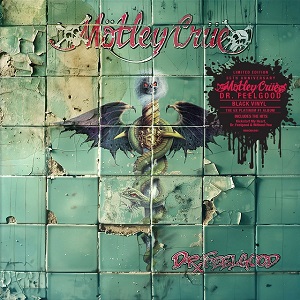PHIL ANSELMO Featured In New Documentary, Border City Music Project
November 10, 2014, 10 years ago

Vocalist Phil Anselmo (Pantera, Down) along with Al The Yeti Bones (The Mighty Nimbus), Dick Wagner (Alice Cooper), Mark Farner (Grand Funk Railroad), Caramine Appice (Ozzy Osbourne) and many more are featured in a new documentary directed by Jon Gillies titled, Border City Music Project.
There’s something about Border City Music Project and its encouraging closing statement that gnaws at the mind.
As world-renowned analytic philosopher, political commentator and media critic Noam Chomsky intones: “The people do resist; the people refuse to be controlled,” we blink and see a glimmer of hope amid the despair of isolation.
Jon Gillies slick yet gritty documentary — imbued with the “stink” of Windsor, the history of Detroit and the rhythms of both — sprints across the screen in an 80-minute, helter-skelter attempt to wake us from our slumber.
Given its first showing last month to a packed Capitol Theatre and greeted by rapturous applause as Chomsky’s statement segued into the end credits — Border City Music Project shakes us, and challenges us to understand how culture has been co-opted by corporate puppeteers who take advantage of our complacency to slowly devour our freedoms and legislate our every waking moment. It exposes how engineered media conglomerates, under the aegis of an elite few, have systematically starved us of real information with which to form our opinions. Instead, we are force-fed ideas that we mistake for our own. We become docile cattle, blissfully unaware that we are being controlled and exploited.
BCMP warns us that we’re being homogenized, robotized, marginalized and lobotomized.
It’s 80 minutes well spent.
From its edgy cinematography to its musically confident sound to its emphatic voices, BCMP forces us to pay attention and asks us to carry on the conversation in a search for answers.
Like Marshal McLuhan before him, Gillies sprinkles his message with imagery and aphorisms, and trusts his audience to deduce a personal meaning and to perhaps effect personal change.
Fifty years ago, in describing our culture as “long accustomed to splitting and dividing all things as a means of control,” Marshall McLuhan realized that people only see the obvious and are blinded to the bigger picture. (Understanding Media: The Extensions of Man. New York: McGraw Hill, 1964.)
As Mark Federman, Chief Strategist, McLuhan Program in Culture and Technology observes: “In doing so, we largely miss the structural changes in our affairs that are introduced subtly, or over long periods of time.
“Whenever we create a new innovation — be it an invention or a new idea — many of its properties are fairly obvious to us. We generally know what it will nominally do, or at least what it is intended to do, and what it might replace. We often know what its advantages and disadvantages might be.“But it is also often the case that, after a long period of time and experience with the new innovation, we look backward and realize that there were some effects of which we were entirely unaware at the outset.”
It is against these effects that Gillies’ on-camera guests rail.
Border City Music Project doesn’t name names. The names don’t matter. Gillies shows us the dots but he doesn’t connect them all. BCMP is, after all, intended as a diagnosis, not a cure. There is no spoonful of medicine. There is no quick fix. There is simply work to be done to first understand Gillies’ message then decide what to do with the knowledge.
At the very least, having heard its clear-channel inspired message, we know the import of sharing our awakening.
Border City Music Project is a non-linear Mobius Strip of a movie, a documentary that may be difficult to fully grasp on one viewing. It’s a cautionary narrative that invites personal interpretations. Fraught with fragmented historical imagery, it is a challenging collection of sound bytes, reflective of the very malaise it seeks to expose. But it is also elegantly nuanced and accessible so that everyone should question at least one facet of modern life, and feel the urge to discuss and dissect our culture in the corporeal company of friends.
If, as McLuhan espoused, the medium has always been the message; if Detroit and Windsor were birthed in industry and cauterized in conflict; if Motown and the Rose City truly were the epicentre of music and creativity for three decades; and if this conjoined city/town truly is still a haven for free thought that can spawn a clarion call such as The Border City Music Project, then there is still hope.
Just who will hear and who will share the message, and just who will form and join the resistance, remains to be seen. See for yourself at Vimeo.












